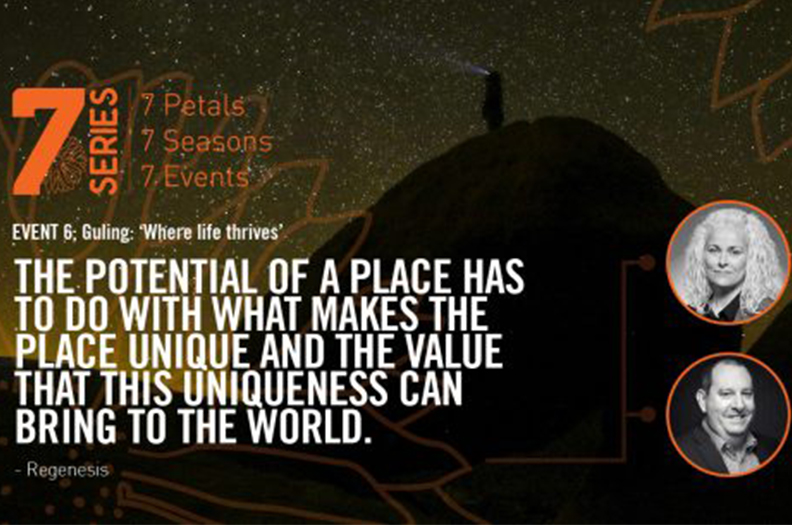Guling ‘Where Life Thrives’ Living Future Melbourne Collaborative

The latest in the ‘7 Seasons, 7 Petals’ speaker evenings. This month we celebrate Guling (Orchid) Season and explore the LBC Place Petal.
Every place is unique- understanding a place and what makes it unique is essential to designing for vitality, vibrancy and viability. So, what is the secret source, the essence of a place that leads to a sense of connection and belonging? This event we will hear from those currently working in place-making, regeneration and Victoria’s Living Building Challenge projects.
“The potential of a place has to do with what makes the place unique and the value that this uniqueness can bring to the world.” ~ Regenes
SPEAKERS
Valli Morphett CEO, CoDesign Studio
Lara Hunt, Australian Regenerates
Scott West, Design Director, Retail, Frasers Property Australia
THIS SESSION WILL COVER
Living Building Challenge: Place Petal
The Living Building Challenge™ is a building certification program, advocacy tool and philosophy that defines the most advanced measure of sustainability in the built environment possible today and acts to rapidly diminish the gap between current limits and the end-game positive solutions we seek. The Living Building Challenge (LBC) poses the question, “What if every single act of design and construction made the world a better place?” LBC’s seven performance standards, or Petals, align with the metaphor of our buildings being designed to emulate flowers – harvesting energy and water in place, using locally available materials, connecting to and enhancing the ecosystem in which they exist, and being beautiful. The intent of the Place Petal is to re-establish the balance between nature and the human constructed environment. It promotes land use and building forms that create human rather than mechanic habitat- favouring human powered transportation and protection of wild areas.
The place petal does not allow development on intact ecosystems such as wetlands. Projects may only be constructed on land that has been previously developed or are surrounded by urban development. Core to the work is the identification of the place according to its reference habitat. To assist design teams in supporting their local ecology. Planted areas need to emulate natural systems and there must be some area for urban agriculture. Habitat exchange is part of this petal- to protect remaining ecosystems teams must consider the purchase or permanent protection of land equal to the size of their development. This petal also advocates for human powered living and mobility.
EVENT DETAILS
Date: Thu, August 15, 2019
Time: 6:00 PM to 8:00 PM AEST
Location: Shaw Contract, 650 Church Street, #3a Richmond, VIC 3121
Register: Click here
